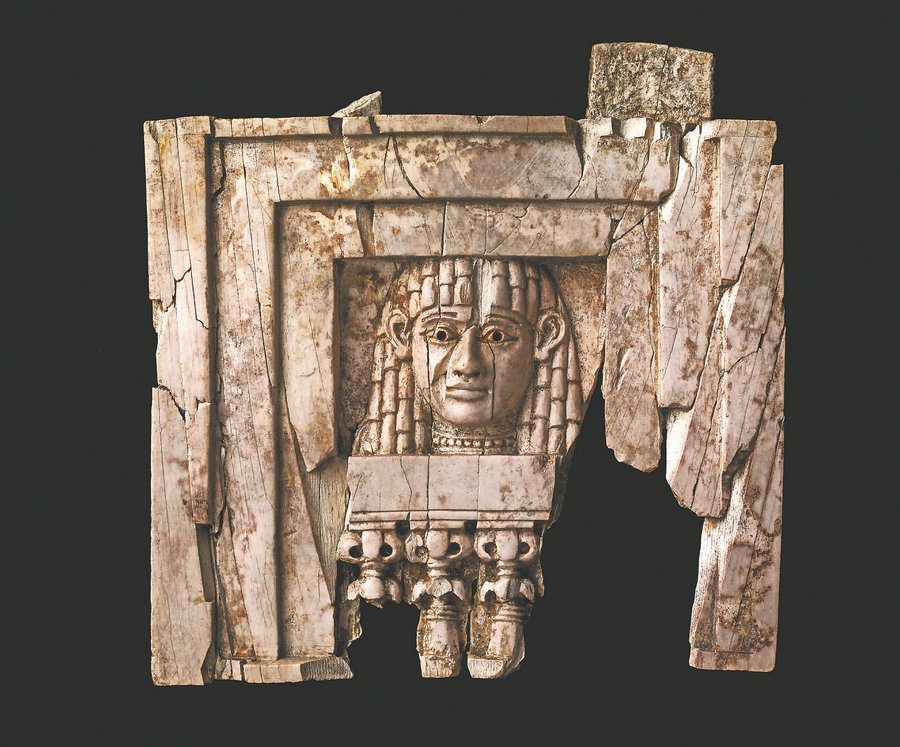

The height of an empire
The exhibition constitutes the final chapter of a three-part ancient civilization series highlighting the enviable collection of the British Museum. The previous two, focusing on ancient Roman and Greek civilizations, were held consecutively by the Suzhou Museum from September 2021.
"While all three were curated by the British side, we've paired them with an exhibition of our own that covers a corresponding period," says Zhang. "The Assyrian empire was at the height of its power during the first half of the first millennium BC, while China's Eastern Zhou Dynasty (770-256 BC) was founded. We mounted an exhibition on the Eastern Zhou Dynasty, which saw China divided into different vassal states, all under the authority of a central ruler."
That authority was gradually eroded in the following centuries as the states fought with one another for survival. Iron weaponry was developed, and chariot warriors became an increasingly vital component of a powerful army which also included infantry and cavalry soldiers. "This mirrors what was happening with the Assyrian army, which derived its invincibility largely from the fearsome chariot warfare it conducted," says Zhang.
"In both ancient China and Assyria, the chariot component of the army was often associated with elite soldiers who received special training and were members of nobility. That's mainly because chariots were expensive to maintain and operate and therefore were the exclusive domain of the social elite," he adds.
"It's also worth noting that Assyrians most likely had learned aspects of chariot-making and chariot warfare from the Hittites, an ancient Indo-European people whom the Assyrians came into contact with through both war and cultural exchanges between the 15th and 13th centuries BC."
The Hittites used spoked wheels on their chariots, which appeared in China around 1300 BC during the late Shang Dynasty (c. 16th century-11th century BC).
Aided by his mighty troops, Ashurbanipal subjugated and terrorized neighboring countries, continuing a tradition long started by his ancestor kings including his grandfather Sennacherib and his father Esarhaddon, who handpicked his younger son Ashurbanipal to be his successor. To appease his resentful older son Shamash-shumu-ukin, Esarhaddon placed him on the throne of Babylonia, which at the time was a vassal state to Assyria.
This effort to make "equal brothers" was doomed. Shamash-shumuukin eventually rebelled in 652 BC against his younger brother after forming a broad coalition that included the kingdom of Elam.
Ashurbanipal responded with overwhelming force. In 648 BC, Babylon, the capital city of Babylonia, fell after a prolonged siege. Shamash-shumu-ukin met his end, the details of which remain unclear today. Ashurbanipal went on to avenge his brother's supporters, launching military campaigns to Elam which culminated in the destruction of two Elamite cities — Susa and Hamanu — in 647 BC.